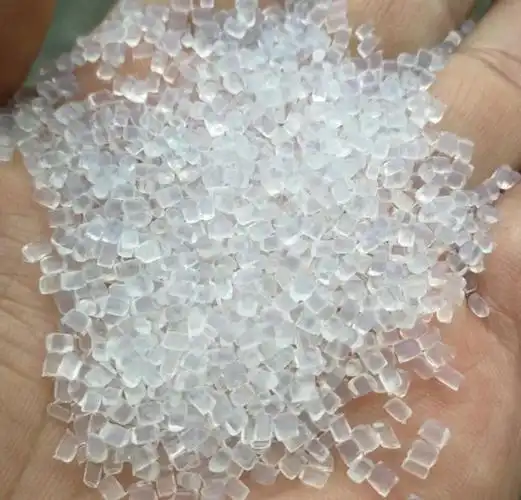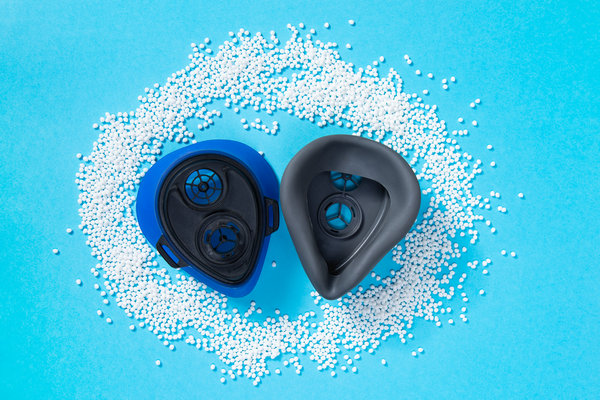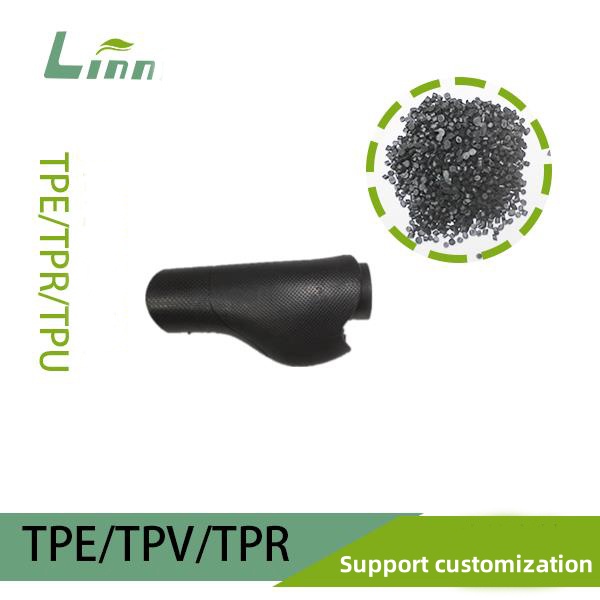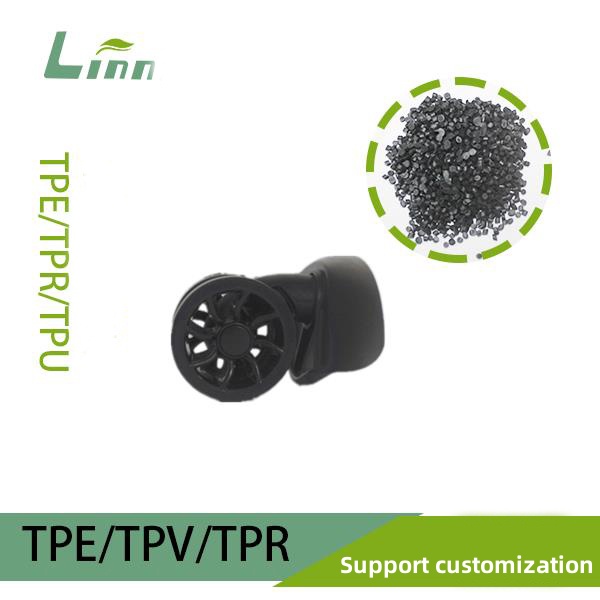Having worked in the plastics and elastomer industry for over 15 years, I’ve seen how thermoplastic elastomers (TPEs) have become a go-to material for everything from soft grips to medical devices. One question that frequently comes up, whether from product designers or manufacturers, is about the hardness levels of TPE soft gels. Understanding these levels is crucial when you’re trying to pick the right material for your project—too soft, and it won’t hold up; too hard, and it loses that flexible, rubbery feel. In this article, I’ll share my insights on the hardness grades of TPE soft gels, how they’re measured, and how to choose the right one for your needs, all based on years of hands-on experience.

The Importance of TPE Hardness
TPEs are prized for their ability to combine the elasticity of rubber with the processability of plastics. Their hardness, measured on the Shore hardness scale, determines how soft or firm they feel, which directly impacts their suitability for specific applications. When I started in this industry, I underestimated how much hardness affects performance. A client once chose a super-soft TPE (0A) for a grip, only to find it tore easily under stress. Since then, I’ve made it my mission to guide others through the maze of TPE hardness levels to avoid similar missteps.
The question of “how many hardness levels” isn’t just about numbers—it’s about understanding what each level offers and how it fits your project. Let’s dive into the details, starting with how hardness is measured and categorized.
Understanding the Shore Hardness Scale
TPE hardness is typically measured using the Shore hardness scale, which quantifies how resistant a material is to indentation. For TPE soft gels, we primarily use the Shore A and Shore 00 scales, as these cover the softer, more flexible materials. Here’s a quick breakdown:
Shore 00: Used for very soft, gel-like materials (think gummy bears or silicone gels). Ranges from 0 to 100.
Shore A: Covers soft to semi-rigid materials (like rubber bands or shoe soles). Also ranges from 0 to 100.
Shore D: Used for harder plastics, but rarely for TPE soft gels (more for rigid TPEs or TPUs).
In my experience, most TPE soft gels fall within Shore 00 (0–100) and Shore A (0–60), as these ranges capture the squishy, flexible properties that make TPEs so versatile. Beyond 60A, TPEs start feeling more like rigid plastics, which isn’t what most people mean by “soft gels.”
Hardness Levels of TPE Soft Gels
So, how many hardness levels are there? The answer isn’t a single number because TPEs are formulated to offer a continuous range of hardness levels, typically from 0 Shore 00 to 60 Shore A for soft gels. However, manufacturers often categorize them into discrete grades for practical purposes. Based on my work with suppliers and real-world applications, TPE soft gels are commonly available in the following hardness ranges:
1. Ultra-Soft TPEs (0–30 Shore 00)
These are the softest TPEs, often described as “gel-like.” They’re squishy, highly deformable, and feel almost sticky to the touch. I’ve used them in applications like:
Medical pads: For pressure relief in hospital beds.
Wearable devices: For soft, skin-friendly components.
Cushioning: In shoe insoles or vibration-dampening pads.
Typical Hardness: 0–30 Shore 00 (e.g., 5, 10, 20, 30).
Challenges: Ultra-soft TPEs are prone to tearing and oil bleeding, especially at high temperatures. I once worked on a medical pad project where a 10 Shore 00 TPE was too fragile for repeated use, so we bumped it up to 20 Shore 00 for better durability.

2. Soft TPEs (30–50 Shore 00)
These TPEs are still very soft but offer slightly more structure. They’re ideal for applications needing a balance of softness and durability, such as:
Grips: For tools or sports equipment.
Seals: In low-pressure environments.
Toys: For squeezable, flexible parts.
Typical Hardness: 30–50 Shore 00 (e.g., 35, 40, 45).
My Experience: I used a 40 Shore 00 TPE for a toy project, and it was perfect—soft enough to feel fun but tough enough to withstand rough play.
3. Medium-Soft TPEs (50 Shore 00 to 10 Shore A)
This range bridges the gap between gel-like and rubber-like textures. These TPEs are soft but have enough firmness to hold their shape under moderate stress. Common uses include:
Overmolded handles: For tools or kitchen appliances.
Medical tubing: Flexible yet kink-resistant.
Wearable straps: Comfortable but durable.
Typical Hardness: 50 Shore 00 to 10 Shore A (e.g., 60 Shore 00, 5A, 10A).
Pro Tip: I’ve found 5 Shore A to be a sweet spot for many overmolding projects—it’s soft enough for comfort but doesn’t deform easily.
4. Soft to Firm TPEs (10–30 Shore A)
These TPEs are less gel-like and more rubber-like, offering better tear resistance and structural integrity. They’re used in:
Automotive seals: For weatherstripping.
Consumer electronics: For soft-touch buttons.
Footwear: For flexible soles.
Typical Hardness: 10–30 Shore A (e.g., 15A, 20A, 25A).
Real-World Example: In an automotive project, we used a 20 Shore A TPE for door seals. It was soft enough to seal tightly but durable enough for years of use.
5. Firm TPEs (30–60 Shore A)
These are the upper end of what’s considered “soft gel” TPEs. They’re still flexible but feel more like traditional rubber. Applications include:
Industrial gaskets: For moderate pressure environments.
Sports equipment: For grips or protective pads.
Medical devices: For components needing some rigidity.
Typical Hardness: 30–60 Shore A (e.g., 35A, 45A, 55A).
My Story: I once specified a 50 Shore A TPE for a medical device handle. It provided the right balance of softness for grip comfort and firmness for durability.
Beyond 60 Shore A
While TPEs above 60 Shore A (e.g., 70A, 80A, or Shore D) exist, they’re not typically classified as “soft gels.” They’re more like rigid plastics, used in applications like hard cases or structural components. For this article, I’m focusing on the softer end, as that’s what most people mean when they ask about TPE soft gels.

Hardness Levels Table
Here’s a concise overview of TPE soft gel hardness levels, their properties, and typical applications:
|
Hardness Range |
Texture |
Common Applications |
Key Properties |
|---|---|---|---|
|
0–30 Shore 00 |
Ultra-soft, gel-like |
Medical pads, cushioning |
High flexibility, prone to tearing |
|
30–50 Shore 00 |
Soft, slightly structured |
Toys, low-pressure seals |
Balanced softness and durability |
|
50 Shore 00–10 Shore A |
Medium-soft, rubbery |
Overmolded grips, medical tubing |
Good tear resistance, flexible |
|
10–30 Shore A |
Soft to firm, rubber-like |
Automotive seals, soft-touch buttons |
Durable, good for sealing |
|
30–60 Shore A |
Firm, rubber-like |
Industrial gaskets, sports grips |
High durability, moderate flexibility |
Note: Hardness increments are typically 5 units (e.g., 5A, 10A, 15A), but custom formulations can hit any point in the range.
How Hardness Levels Are Determined
Manufacturers don’t just pick random hardness levels—they formulate TPEs by adjusting the ratio of soft segments (like butadiene or ethylene-butylene) to hard segments (like styrene) and adding plasticizers like oils. Softer TPEs have more plasticizer and softer segments, while firmer ones lean on harder segments.
In my early days, I worked with a supplier to develop a custom 25 Shore A TPE for a fitness tracker strap. We tweaked the oil content and SEBS ratio to hit the exact hardness, which taught me how precise these formulations can be. Most suppliers offer standard grades in increments of 5 Shore units (e.g., 10A, 15A, 20A), but custom hardness levels are possible for large orders.
Choosing the Right Hardness for Your Project
Selecting the right TPE hardness depends on your application. Here’s how I approach it:
Define the Application: Is it a soft grip needing comfort (e.g., 20–40 Shore A) or a seal requiring durability (e.g., 40–60 Shore A)? For ultra-soft cushioning, go for 0–30 Shore 00.
Consider Environmental Factors: Will the TPE face heat, UV, or chemicals? Softer TPEs (below 30 Shore A) can bleed oil or degrade faster in harsh conditions. I learned this when a 10 Shore 00 TPE pad failed in a hot warehouse.
Test for Durability: Softer TPEs tear more easily. For high-wear applications, I recommend 30–60 Shore A for better tear resistance.
Balance Cost and Performance: Ultra-soft TPEs often require more expensive formulations to prevent oil bleeding. I once saved a client 10% by switching from a 10 Shore 00 TPE to a 20 Shore 00 that performed just as well.
Consult the Supplier: The technical data sheet (TDS) will list available hardness levels and their properties. If you’re unsure, ask for samples to test.
In a project for a wearable device, we tested three hardness levels (10A, 20A, 30A) before settling on 20 Shore A. It offered the right mix of softness for comfort and durability for daily wear.
Common Challenges and Solutions
Over the years, I’ve seen a few recurring issues when working with TPE hardness levels:
Too Soft for the Job: Ultra-soft TPEs (0–30 Shore 00) can tear or deform under stress. For a toy project, we switched from 20 Shore 00 to 40 Shore 00 to improve durability without losing the squishy feel.
Oil Bleeding in Soft Grades: Softer TPEs with high oil content can bleed at high temperatures (above 60–80°C). I recommend SEBS-based TPEs with high-viscosity oils for stability.
Inconsistent Hardness: Poor mixing during manufacturing can lead to hardness variations. Always source from reputable suppliers and request batch consistency data.
Molding Issues: Very soft TPEs (below 20 Shore A) can stick to molds. I’ve used mold release agents or adjusted processing temperatures (e.g., 160–200°C) to fix this.
One memorable case involved a client using a 5 Shore 00 TPE for a medical cushion. It was too soft, tearing after a few uses. We reformulated to 15 Shore 00, which held up perfectly.

Industry Insights and Trends
The TPE industry is always evolving. Recent trends I’ve noticed include:
Custom Hardness Grades: Suppliers are offering more precise hardness increments (e.g., 12A, 18A) for niche applications.
Low-Bleed Formulations: New TPEs use high-viscosity oils to reduce oil bleeding in soft grades, especially below 20 Shore A.
Sustainability: Bio-based TPEs are emerging, with similar hardness ranges but eco-friendly credentials. I tested a bio-based 30 Shore A TPE last year, and it performed as well as traditional versions.
Keeping up with these trends has helped me recommend better materials to clients, especially for eco-conscious or high-performance projects.
Practical Tips from the Field
Here are some actionable tips I’ve picked up over the years:
Request Samples: Test multiple hardness levels before committing. Most suppliers offer small batches for prototyping.
Check the TDS: The technical data sheet lists hardness, tensile strength, and other properties. Compare these to your needs.
Simulate End-Use Conditions: Test the TPE under real-world conditions (e.g., heat, stress, UV) to ensure the hardness holds up.
Work with Suppliers: If you need a specific hardness (e.g., 22 Shore A), ask for a custom formulation. It’s often worth the extra cost for large runs.
Balance Softness and Durability: Don’t go too soft unless the application demands it. A 30–50 Shore A TPE often offers the best of both worlds.
Wrapping Up
TPE soft gels come in a continuous range of hardness levels, typically from 0 Shore 00 to 60 Shore A, with common grades in increments of 5 (e.g., 5A, 10A, 20A). These levels cater to a wide range of applications, from ultra-soft medical pads to firm automotive seals. My years in the industry have taught me that choosing the right hardness is about understanding your project’s needs—comfort, durability, environment—and testing thoroughly to get it right.
If you’re new to TPEs or refining an existing product, start by defining your requirements and consulting the supplier’s TDS. Test samples, simulate real-world conditions, and don’t be afraid to ask for custom formulations. With the right hardness, your TPE product can shine in both performance and user experience.

Related Questions and Answers
Q: How do I know which TPE hardness is right for my project?
A: Define your application’s needs (e.g., softness, durability, environment). Test samples in the target hardness range (e.g., 20–40 Shore A for grips) and simulate end-use conditions. Consult the supplier’s TDS for guidance.
Q: Can I get a TPE with a specific hardness, like 22 Shore A?
A: Yes, many suppliers offer custom formulations, especially for large orders. Request samples and specify your exact hardness needs.
Q: Do softer TPEs always bleed oil?
A: Not always, but ultra-soft TPEs (below 30 Shore 00) with high oil content are more prone to bleeding, especially above 60–80°C. Choose SEBS-based TPEs with high-viscosity oils to minimize this.
Q: How does hardness affect TPE processing?
A: Softer TPEs (below 20 Shore A) can stick to molds or require lower processing temperatures (160–200°C). Firmer TPEs (30–60 Shore A) are easier to mold but may need higher temperatures (180–230°C). Check the TDS for specifics.





